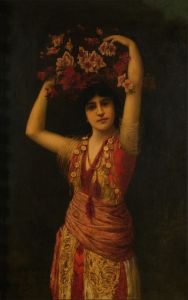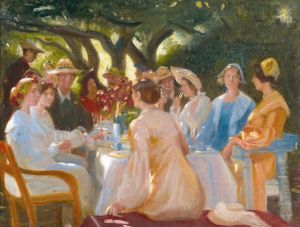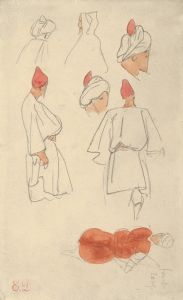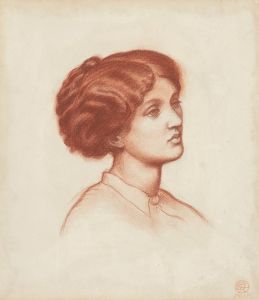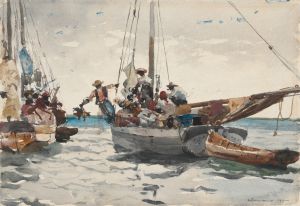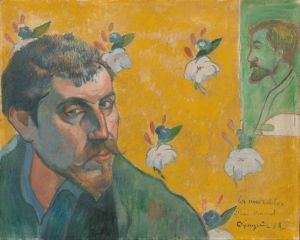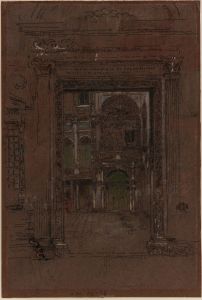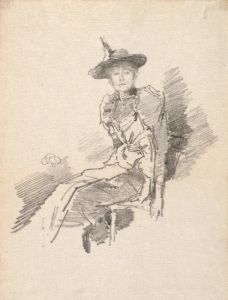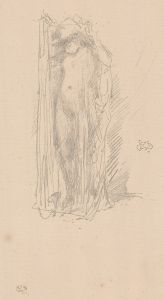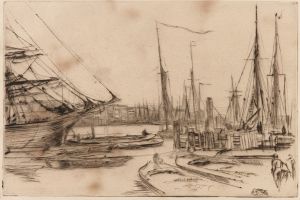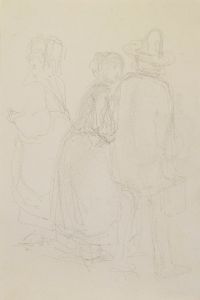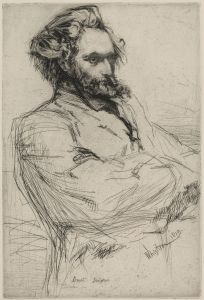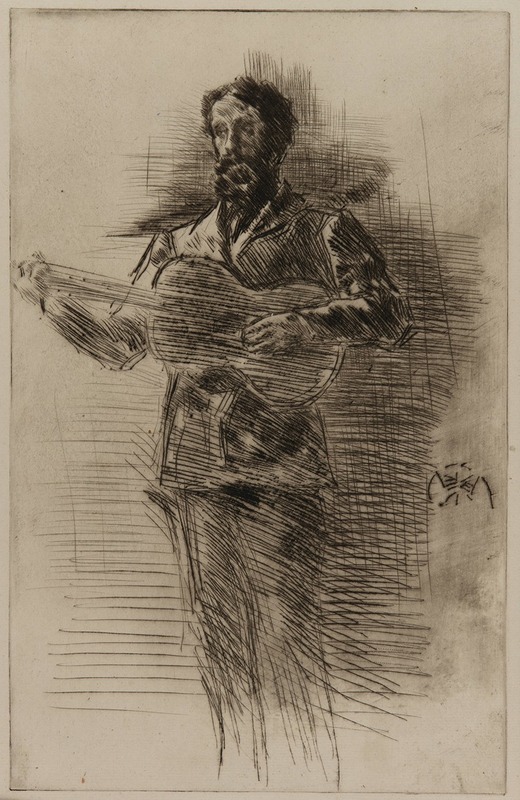
The Guitar Player
A hand-painted replica of James Abbott McNeill Whistler’s masterpiece The Guitar Player, meticulously crafted by professional artists to capture the true essence of the original. Each piece is created with museum-quality canvas and rare mineral pigments, carefully painted by experienced artists with delicate brushstrokes and rich, layered colors to perfectly recreate the texture of the original artwork. Unlike machine-printed reproductions, this hand-painted version brings the painting to life, infused with the artist’s emotions and skill in every stroke. Whether for personal collection or home decoration, it instantly elevates the artistic atmosphere of any space.
James Abbott McNeill Whistler's "The Guitar Player" is a notable work by the American-born, British-based artist, who is renowned for his contributions to the Aesthetic Movement. Whistler, born in 1834, was a pivotal figure in the late 19th-century art world, known for his innovative approach to painting and his belief in "art for art's sake." This philosophy emphasized the importance of beauty and aesthetic experience over narrative content or moral messages in art.
"The Guitar Player" is a portrait that exemplifies Whistler's distinctive style, characterized by a harmonious use of color and a focus on mood and atmosphere. Whistler often employed a limited palette and subtle tonal variations to create a sense of harmony and balance in his works. This painting is no exception, showcasing his ability to capture the essence of his subject with a refined elegance.
The subject of "The Guitar Player" is depicted in a contemplative pose, holding a guitar, which suggests a moment of introspection or musical engagement. Whistler's attention to detail and his delicate brushwork highlight the textures of the clothing and the instrument, while the background is rendered in soft, muted tones that draw attention to the figure. This approach is consistent with Whistler's interest in creating a sense of intimacy and immediacy in his portraits.
Whistler's portraits often reflect his interest in the interplay between music and visual art, a theme that is evident in "The Guitar Player." The inclusion of the guitar not only serves as a focal point but also suggests a connection between the auditory and visual experiences. This synthesis of art forms is a hallmark of Whistler's work, as he frequently drew parallels between painting and music, exploring how both could evoke emotion and mood.
Throughout his career, Whistler was influenced by various artistic movements and styles, including Realism, Impressionism, and Japanese art. His exposure to Japanese prints, in particular, informed his use of composition and space, as well as his emphasis on simplicity and elegance. These influences are subtly present in "The Guitar Player," where the composition is carefully balanced, and the figure is isolated against a minimal background, allowing the viewer to focus on the subject's expression and posture.
Whistler's work, including "The Guitar Player," was often met with mixed reviews during his lifetime. While some critics appreciated his innovative approach and technical skill, others were less receptive to his departure from traditional narrative and representational art. Despite this, Whistler's legacy as a pioneering artist has endured, and his contributions to the development of modern art are widely recognized today.
"The Guitar Player" remains an important example of Whistler's artistic philosophy and his ability to convey mood and emotion through portraiture. It reflects his commitment to the aesthetic principles that defined his career and continues to be appreciated for its beauty and subtlety. Whistler's influence can be seen in the work of subsequent generations of artists who embraced the idea of art as an autonomous and expressive form.





